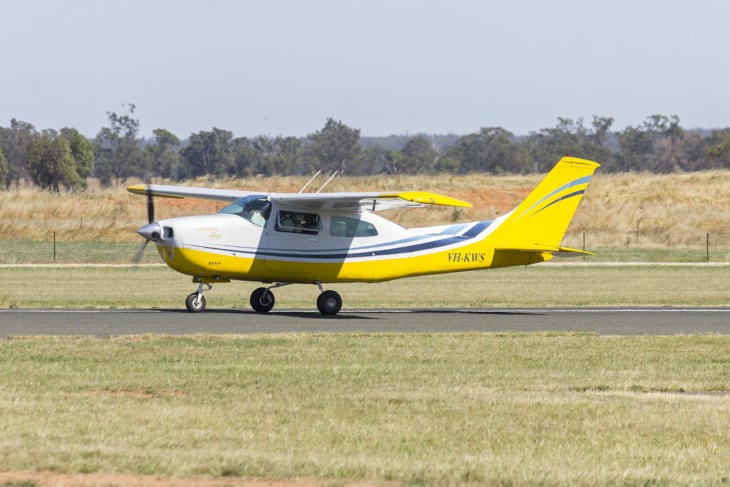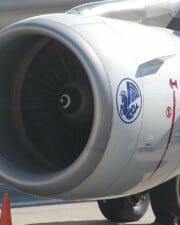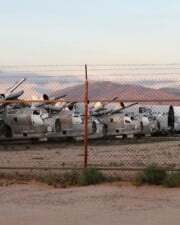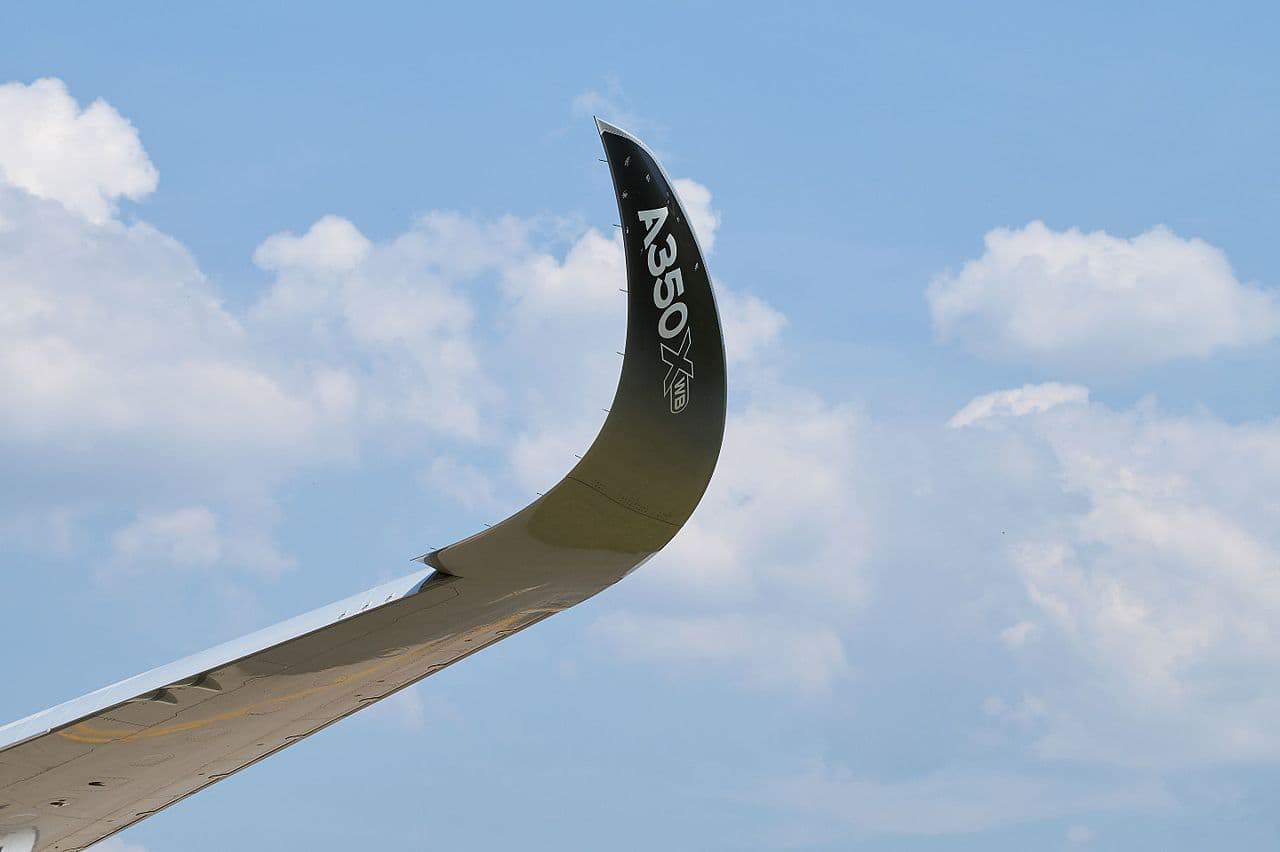Have you ever wondered how a machine that was meant to fly is able to get you from point A to point B on an airport’s surface? Whether you’re flying on a Boeing 737 or a Cessna 172, turning on the ground will be included at some point on your next flight.
Table of Contents
How Do Planes Turn on the Ground?
It all comes down to three main controls: brakes, rudders, and the tiller. When flying in smaller aircraft, there is mechanical linkage that connects the cockpit controls to the intended control surfaces. This means that as the pilot pushes the right rudder pedal, a set of cables moves so that the rudder deflects to the right. On transport category aircraft, this process is aided by a computer.
Brakes are applied in the direction of the turn to help swing the nose around to the new heading. The tiller can also help on transport category aircraft. More on that later.
Speed Matters
When taxiing, speed plays a big role in which flight controls are used to turn on the ground. On a long and straight taxiway, a pilot can usually make small adjustments to stay on centerline by just using the rudder.
Staying off of the brakes not only extends the life of them, but it’s better piloting technique as well! When making larger turns, it is important to use sufficient braking pressure so that the aircraft can pivot effectively and get headed in the right direction.
Do Ailerons Help?
In terms of actually accomplishing the turn, ailerons do close to nothing. They can, however, help with wind correction while on the ground. Depending on where the wind is coming from, the ailerons can be deflected to help the aircraft better maintain centerline.
When there is a headwind, the yoke should be turned into the wind. If there is a tailwind, the yoke should be pushed forward and turned away from whichever way the wind is coming. These changes will make it easier to stay on centerline and less turns will be required.
The Rudder Pedals and Brakes
No matter the type of aircraft, use of the brakes and rudder are essential for turning. The control of these two systems are located on a set of pedals located at the pilot’s feet. The bottom portion of the pedal controls the rudder and the top controls the brakes.
In order to reach both of these controls while taxiing, a pilot must lift his or her feet off of the floor and completely onto the pedal system. Improper foot placement can lead to it being more difficult for the pilot to make accurate control adjustments.
Once the pilot is ready for takeoff, his or her heels can now rest on the ground considering that brakes won’t be used again until landing.
Which Axes Are Involved?
Airplanes have three different axes that are fundamental to flight: horizontal, vertical, and lateral. The longitudinal axis runs from the nose to the tail and the lateral axis extends from wingtip to wingtip. These two axes deal with roll and pitch, respectively.
Since the aircraft stays level on the ground during turns, neither of these first two axes are impacted when a turn is made. The one that is impacted is the only one left: the vertical axis.
The vertical axis runs, you guessed it, vertically through the center of the plane. A change in direction about this axis is known as yaw. When viewed from above, this change will result in the aircraft’s nose moving to the left or right depending on the control input given by the pilot.
During turns on the ground, movement around the vertical axis is created by modifying all three of the flight controls discussed earlier. It takes good piloting technique to know just how much input is needed on each of these controls to make a smooth and accurate turn.
Knowing Where To Turn
Having good turning technique is only half the battle when taxiing. The second half is knowing where to go.
Pilots follow what are known as taxiway centerlines in order to guide them along the airport surface. These lines are painted bright yellow and are included on all taxiways no matter how long or short. When turning, it’s the job of the pilot to make sure that the nose wheel of the aircraft stays on top of the centerline using a combination of rudder, brakes, and tiller if available.
Well, what about tailwheel airplanes? Due to the aircraft nose, or cowling, blocking the pilot’s view of the centerline in most cases, a different type of taxiing technique is needed. Oftentimes, pilot’s will make a small s-shaped pattern across the taxiway centerline while taxiing forward in order to keep the centerline in sight out of either window.
Only small amounts of rudder input are needed in special cases like these. If too much rudder is added, the amount of deviation from the centerline could become great enough for the aircraft to go off the taxiway.
How About Tillers?
Tillers are a great tool available to help steer aircraft on the ground as well. Found mostly on larger transport category aircraft, tillers help the nose wheel to point in the direction that the aircraft would like to turn. Most tillers allow for 60-70 degrees of movement.

As the wingspan on an aircraft gets larger, tillers become increasingly useful to get around those tight corners when the rudder and brakes combined aren’t enough.
Tillers look different from aircraft to aircraft. On Airbus aircraft, the tiller control in the cockpit is a single handle that moves around a central point. When looking at Boeing aircraft, the same control looks similar to a portion of a steering wheel. In most cases, this is just a result of design preference by the manufacturer.
Getting the Plane Moving
The rudder, brakes, and tiller are all important in the turning of an aircraft, but forward movement begins with thrust. Similar to a car, a larger amount of thrust or power is needed to get the aircraft moving forward from its parking spot or the point at which the pushback was stopped.
When making sharp turns on the ground, additional power is needed to keep the aircraft moving forward. In these types of situations, pilots will use a combination of brakes, throttle, and tiller (in larger aircraft) to help the aircraft get around the corner.
Fly-By-Wire Technology
While smaller aircraft use mechanical linkage to move different control surfaces, transport category aircraft use what’s called fly-by-wire technology. With fly-by-wire technology a pilot makes a control input on the flight deck, a computer processes that input, and then outputs commands for the flight surfaces.
This type of technology not only helps aircraft to accomplish turns on the ground, but in flight as well. As the aircraft reaches faster airspeeds, the deflection of the controls becomes increasingly less to maintain proper stability.
The opposite is true for ground operations. When the aircraft is moving at very slow airspeeds, a larger amount of control deflection is needed in order to help the aircraft make turns.
The amount of control deflection needed is monitored and adjusted by multiple computers on board. If the primary fly-by-wire computer system fails, there is a backup on board. Redundancy is very common in aircraft of all types. Those within the transport category are no exception.
References ▾
Related Posts












